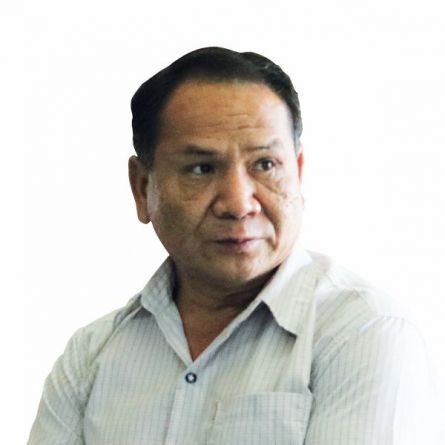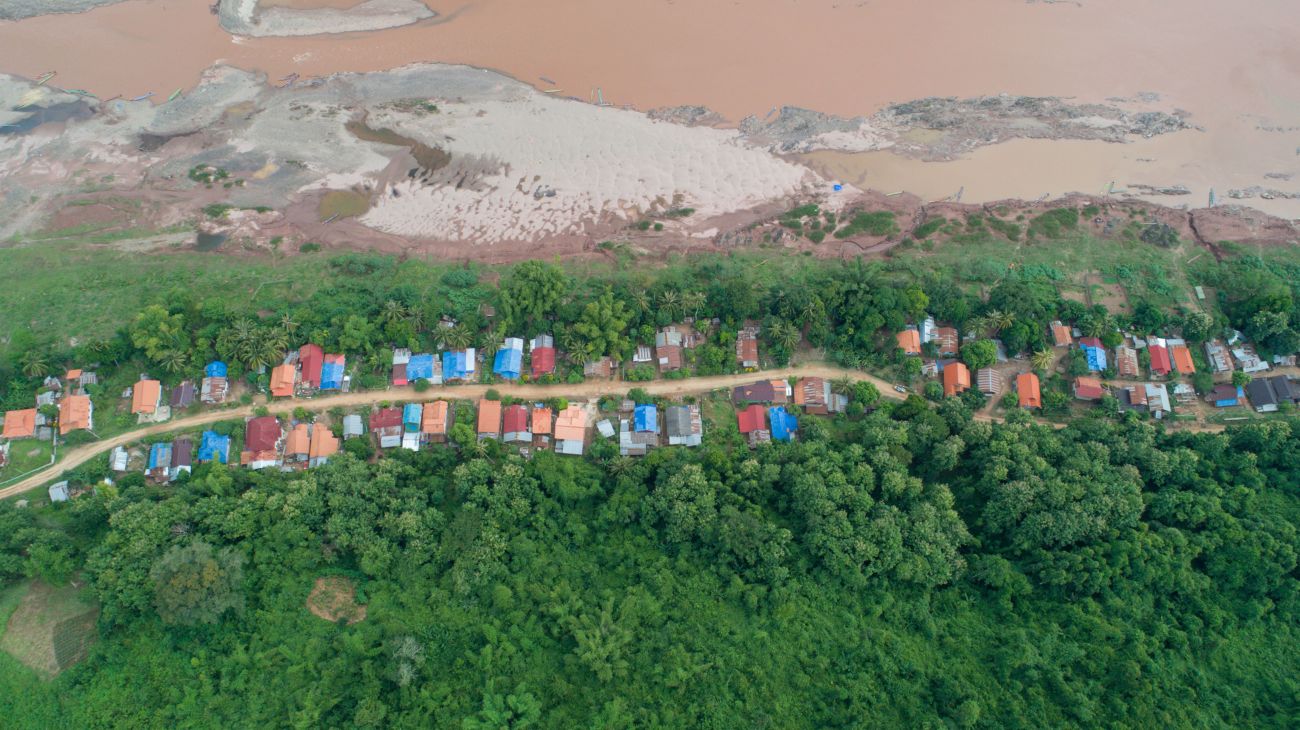

Nam Poui is one of the world’s most culturally and ecologically rich landscapes. Its 191,200 hectares include the Nam Poui National Biodiversity Conservation Area. The landscape includes three important tributaries of the Mekong: Nam Poui, Nam Phoun and Nam Lai rivers. This highly diverse landscape harbours many endangered and threatened species including lar gibbon, gaur, tiger, dhole, serow, Asian black bear and the Asian elephant. Nam Poui is home to almost 38,000 people and 37 ethnically diverse villages inside, at the boundary and alongside protected areas. These are home to Hmong, Khmu, Malabri and Eiwmian ethnic groups who depend on forests to sustain their livelihoods and cultures. Investments in strengthening forest governance and community-led forest management will ensure the people of Nam Poui can share in the benefits derived from the forest while protecting and restoring this threatened landscape and mitigating climate change.
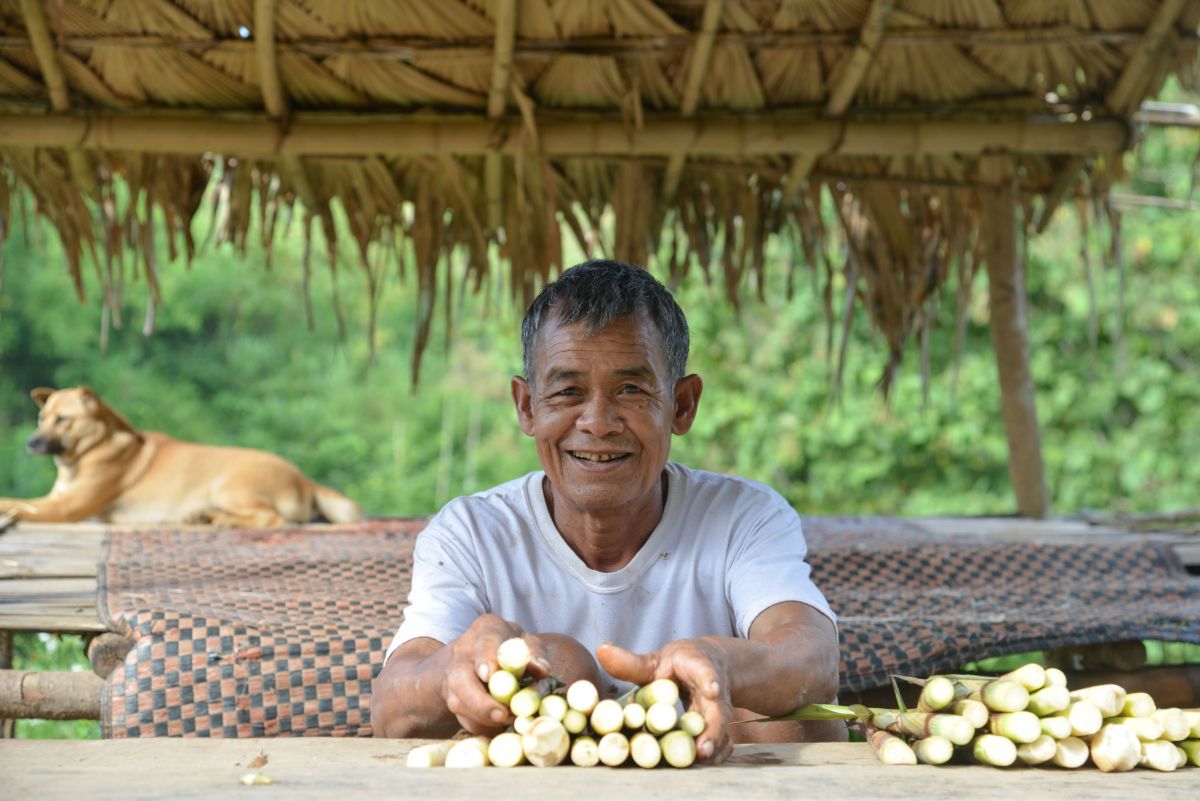
Nam Poui by numbers
Total area of landscape: 195,638 hectares
Forest cover: 53 percent
Population: 40,991
Poverty rate: 23 percent
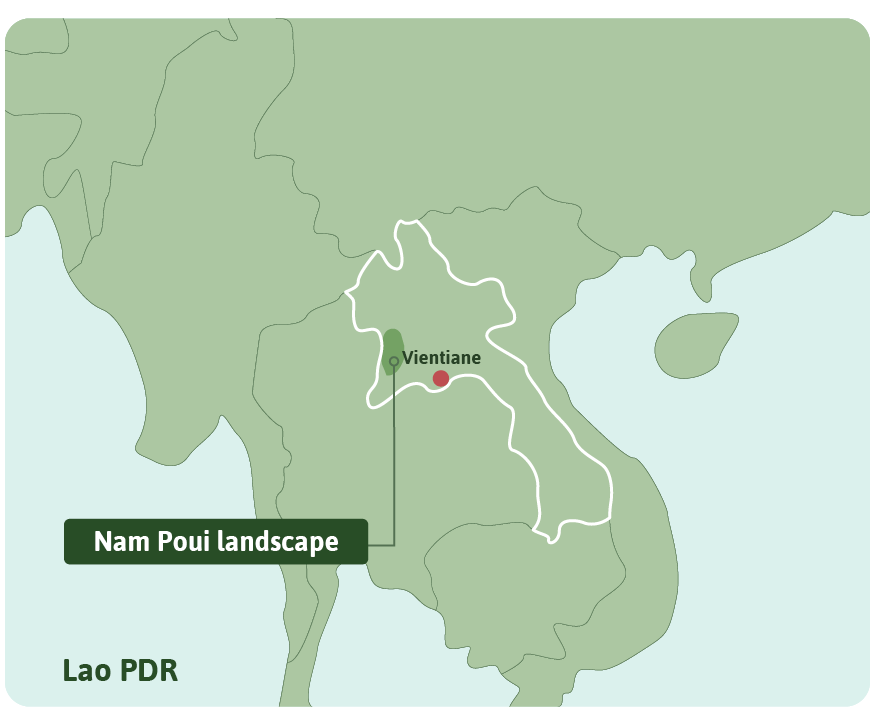
Entry points for investment to achieve the SDGs
Formalizing local communities' rights to manage forests and protected areas
Supporting community-led biodiversity conservation and livelihoods of communities that depend on forests
Supporting the development of inclusive forest-based business opportunities for women and other marginalized groups
The Nam Poui landscape in Lao PDR and the people and biodiversity it shelters are threatened by deforestation and resource extraction. Empowered local communities must lead the sustainable development and the protection of this forested landscape, and at RECOFTC we have the vision, skill, relationships and experience to support their leadership. Since 2017, we have helped the people of Nam Poui build their capacity to secure their land tenure and resource rights, govern and manage their lands and improve their livelihoods. Today, there are tremendous new opportunities in Nam Poui to further support local communities, government, civil society and the private sector to overcome these threats. We offer three entry points for action that will foster prosperous communities and a thriving landscape by capitalizing on the ambitions of the local people, our experience in Nam Poui and the work of other organizations. Through investments in Nam Poui we can contribute directly to achieving the Sustainable Development Goals of the United Nations 2030 Agenda. By 2030, we can lift more than 5,000 people out of poverty, empower 400 women to take active roles in decision-making, strengthen the capacity of people to adapt to climate change, eliminate more than 100 tons of carbon and foster sustainable management of 20,000 hectares of forest. And by securing land rights, we can enable Lao PDR to foster good forest governance.
Challenges
Climate
- Illegal logging and encroachment are driving deforestation, increasing the vulnerability of local people to abnormal precipitation patterns, food insecurity, flooding, landslides and other effects of climate change.
Livelihoods
- Annual income per capita is below 2,000 US dollars
- Local communities have limited livelihood options and rely on shifting cultivation
- Income generating opportunities are limited by lack of access to technology for non-timber forest products and weak market links.
Governance
- Local communities have limited participation in decision-making on the management of natural resources.
- The capacity of government agencies to enforce rules and maintain transparency in protecting the landscape need to be strengthened.
Social inclusion
- Local people, particularly women and low-income groups, have limited involvement in decisions on allocation and management of natural resources.
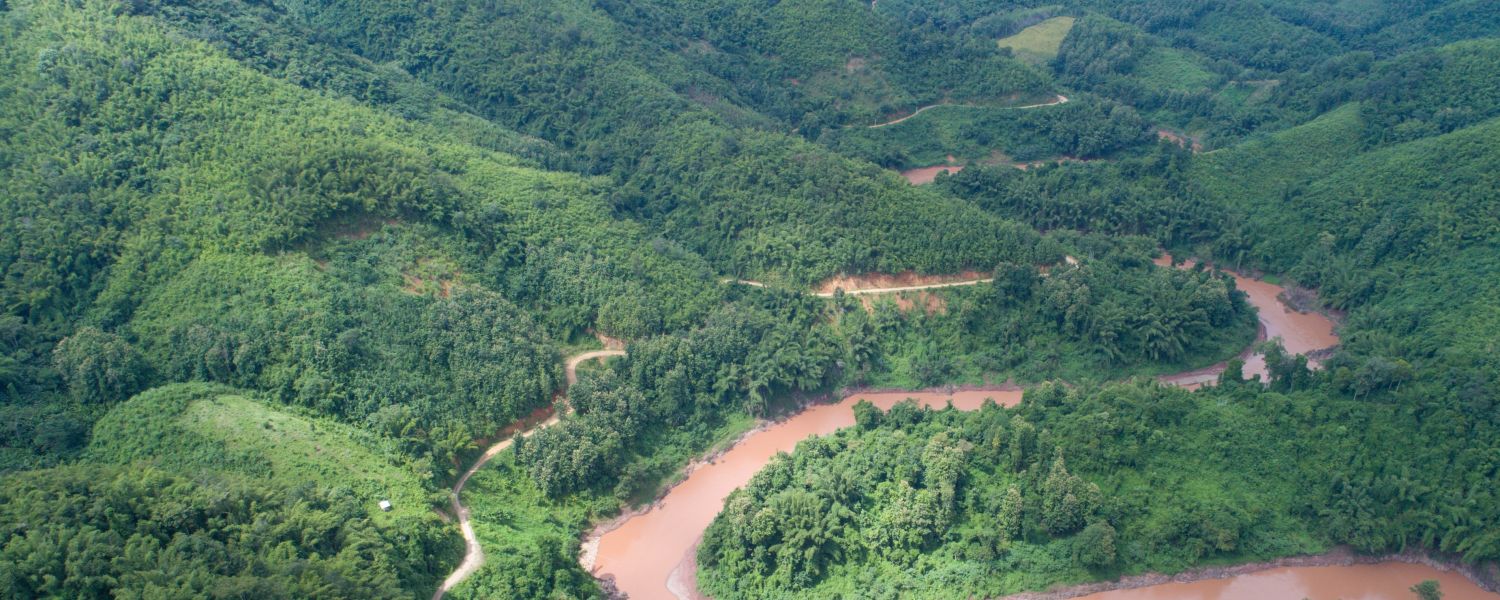
Partners
Local communities
- Twenty-six percent of the population rely on agriculture and forests for their survival.
Government
- Government agencies play a leading role in managing the forests including 20,000 hectares under the Nam Poui National Biodiversity Conservation Area.
- There are limited resources for patrolling and other measures to protect the landscapes.
Private sector
- Private sector involvement in and contribution to conservation and landscape restoration is not well developed.
- Companies manage land concessions and lease land for tree plantations and agroforestry with limited engagement of local communities.
Civil society
- Civil society supports local people to manage forest resources and secure their rights.
Our experience in Nam Poui and Lao PDR
Since 2017, we have supported communities to secure their tenure rights and ensure a healthy and resilient Nam Poui landscape. Through our work we have become a leading voice in community forestry, recognized and trusted by local communities, the forestry administration, local authorities and civil society. We have:
- Trained 300 people, 30 percent of them women, to manage community forests
- Supported teak smallholders to obtain 250 tree certificates through capacity development for community and local enterprises
- Helped to develop two village forest management plans for inclusive, community-led and sustainable use of forest resources
RECOFTC is well established in Lao PDR. In 2007, the National Agriculture and Forestry Research Institute of Lao PDR signed a Memorandum of Understanding with RECOFTC. The Department of Forestry took over as custodian of the partnership, signing a Memorandum of Understanding with RECOFTC in 2011. In Lao PDR we have:
- Helped more than five community forest groups to formalize their rights
- Trained more than 4,700 people, 30 percent of them women, in the sustainable management of natural resources
- Supported two local communities in the management of their forests, land and natural resources
- Partnered and strengthened the capacity of more than 25 civil society and government organizations




